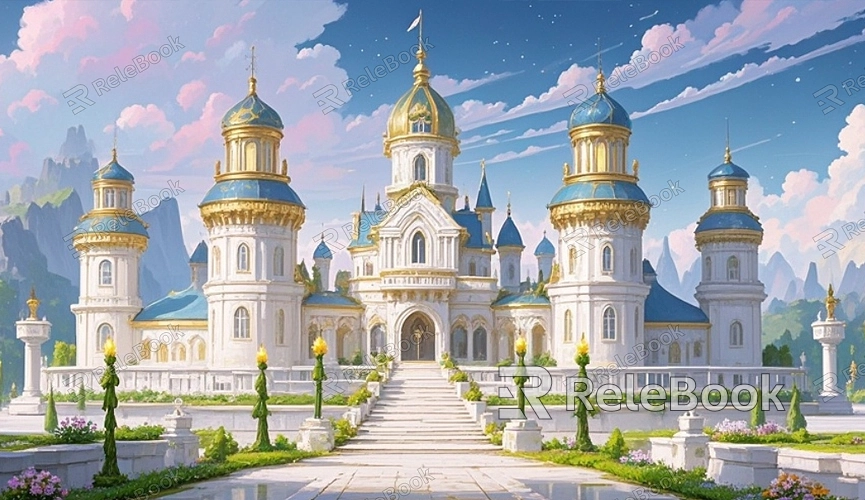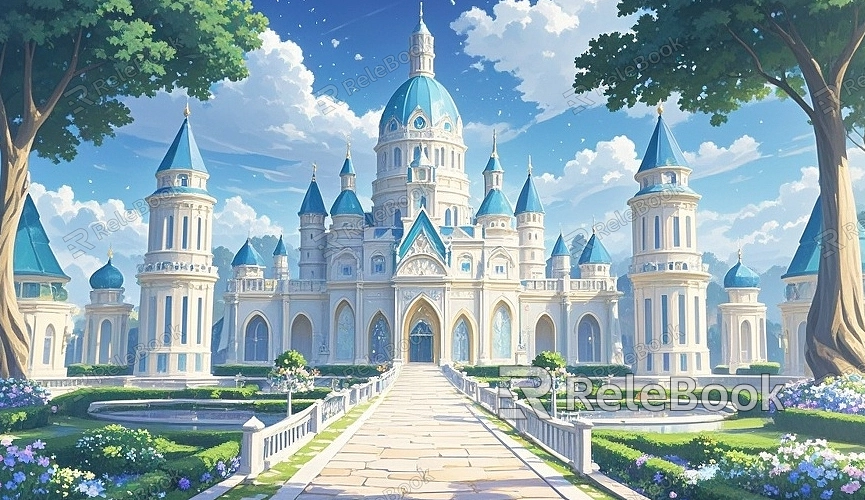How to Create a 3D Model of a Castle?
Castles are iconic structures, steeped in history and fantasy, with their intricate designs and grand appearances. Whether for video game development, film production, or virtual reality, 3D modeling technology allows us to vividly recreate these majestic buildings. This article will guide you through the process of creating a 3D model of a castle, detailing each step from conceptualization to the final model, to help you master this technique.

Gather Reference Materials
Before starting the modeling process, it's crucial to collect a wide range of reference materials. Castles have complex structures and elaborate designs, so detailed references will help you accurately capture these elements. Look for photos, drawings, and architectural plans of castles online. On-site photography, archaeological data, and historical documents are also valuable sources. Organizing these materials will ensure a smoother modeling process.
Choose the Right Software
Selecting the appropriate 3D modeling software is key to a successful project. There are many powerful modeling tools available, such as Blender, Maya, and 3ds Max. Blender is a free and robust option, while Maya and 3ds Max offer more specialized tools and plugins. Choose the software that best fits your needs and budget, and familiarize yourself with its basic operations and features to work more efficiently.

Create a Basic Model
Before diving into detailed modeling, start by creating a basic model. This could be the overall outline of the castle or its main structural components. Use simple geometric shapes (like cubes and cylinders) to build the basic framework. At this stage, focus on getting the general shape and proportions right, without worrying too much about intricate details.
Add Details
Once the basic model is complete, begin adding details. This includes features such as towers, walls, gates, and windows. Use the sculpting tools and subdivision techniques in your software to add these finer elements. Pay close attention to accuracy, ensuring that each part of the model reflects the real architectural features of a castle. Refer to actual building photos and drawings during this phase to enhance the model’s realism.
Apply Textures and Materials
With the model finished, the next step is to apply textures and materials to give it a realistic appearance. Texturing involves adding color and detail to the model's surface. Use texture maps (such as for brick or wood) to simulate the castle's materials. Choose appropriate texture maps and use UV mapping techniques to apply them correctly. Material settings, including glossiness and reflectivity, also affect the final look of the model.
Render and Refine
Rendering is the process of converting your 3D model into a 2D image. Set up lighting, camera angles, and rendering parameters to generate the final visuals. During rendering, check every detail of the model to ensure it meets your desired effect. Make adjustments and optimizations as needed to improve the quality and appearance of the model.
Export and Share
After modeling and rendering, the final step is to export and share your model. Depending on its intended use, choose a compatible file format, such as OBJ or FBX. Ensure the exported file format is compatible with your target platform or software. Share the model on relevant platforms or with others to receive feedback and make further improvements.
In summary, creating a 3D model of a castle involves multiple steps, from gathering reference materials to exporting and sharing the final model. By mastering these techniques, you can create impressive castle models. For more professional 3D models and textures, visit the Relebook website to download high-quality resources that can enhance your modeling projects.
FAQ
Why is gathering reference materials important?
Reference materials help you accurately understand the structure and details of a castle, making the modeling process more efficient. They provide real visual information that aids in replicating the castle's appearance.
Which 3D modeling software is best to use?
Blender is a free choice that is suitable for beginners and those on a budget. Maya and 3ds Max offer more professional features, making them suitable for experienced users and high-quality model creation.
How do I apply appropriate textures to my model?
Select textures that match the castle's materials and use UV mapping techniques to apply them correctly to the model's surface. The choice and application of textures directly affect the model’s realism.
How can I enhance the effect of my model during rendering?
Set up appropriate lighting and camera angles, adjust rendering parameters, and refine the model's details to improve its final appearance. The rendered images can be used for showcasing and evaluating the model’s quality.
How do I export and share my model?
Export the model in a file format compatible with your target platform, such as OBJ or FBX. Upload the file to relevant platforms or share it with others to receive feedback and make further improvements.

